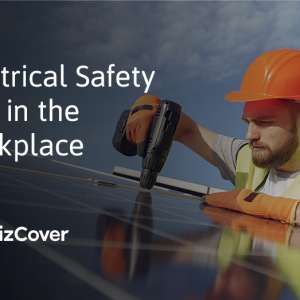A licensed electrician’s working day in the field can be as varied as any other trade profession, if not more. Every day will be different than the last when you become an electrician and enter the workforce as a licensed electrician in Australia.
If you become an electrician in Australia, any given day may see you do everything from diagnosing and repairing electrical faults to installing, and monitoring new systems, working with data cables, or performing maintenance on electrical networks.
So, what do electricians do? You could be working in a variety of settings once you become an electrician (sometimes also referred to as an electrician engineer), from commercial buildings and civil works projects to shopping centres, industrial complexes, high rise apartment buildings, and public transport infrastructure like railway systems. If that sounds like a career that you would find rewarding, read on to find out all about how to become a licensed electrician in Australia.
1. Required skills needed to become an electrician
As well as a formal electrician qualification, if you are intent on becoming a licensed electrician in Australia, then these are the key required electrician skills that you’ll be working on developing and fine-tuning as you learn the craft of the electrician trade:
- Aptitude for electronics and mechanics.
- A thorough technical understanding.
- Strong hand-eye coordination and good eyesight.
- Precise and detail-oriented.
- Able to think logically and possess the diagnostic ability.
- Good communication skills and troubleshooting.
- The ability to work both as part of a team and independently.
- The ability to cope with physically demanding work.
If you’re a logical thinker with a thirst for problem solving and an appetite for technical knowledge, then a career as a licensed electrician could be a great fit with your interests and skills set.
2. Education and qualifications for electricians
Becoming an electrician requires that you complete a four-year apprenticeship, which typically requires that you have completed at the very least your Year 10 qualification. By the end of your electrician apprenticeship you will have obtained your Certificate III in Electrotechnology Electrician, as well as having completed the required electrician licensing assessments.
Apprenticeships are a popular route to a rewarding career as a licensed electrician or an electrician engineer for school leavers, who will graduate in four short years ready to enter the workforce and ply their trade as a newly minted licensed electrician.
As you work your way through your licensed electrician apprenticeship, learn what electricians do, and edge closer to gaining your electrician qualification you’ll learn in the field what the job entails, while also studying the theory behind the electrician trade at an electrical trade school. In the classroom and lab you’ll learn all about the science involved in the electrician trade.
Importantly, you will also learn how to work safely with high voltage electrical currents. Developing a clear understanding of safe work practices is a critical part of becoming a licensed electrician, because when you’re working with high voltage electricity every day there will always be a safety risk factor that you need be aware of and respect.
As a licensed electrician in Australia, you will benefit from staying vigilant at all times while working. When your daily jobs in the field may include everything from mounting switchboards to working with cables and live wiring, understanding and adhering to safe work practices and health and safety regulations is a must. For this reason, electrician insurance is a must once you start your career as a licensed electrician.
3. Getting started as a licensed electrician
As you near the completion of your electrician apprenticeship, you can start looking ahead at the promising licensed electrician career that awaits you. Your first step after graduating from your electrician apprenticeship should be to apply for an electrician’s licence.
It’s important that you double check the electrician licensing requirements in your home state, because each state has its own system for registration and licensing requirements for newly qualified licensed electricians.
Recommended reading: How to get an electrician licence in NSW?
Once your electrician traineeship or electrician apprenticeship is complete and you become an electrician, you need to apply for an electrician’s licence. Remember, as registration and licensing requirements can differ between states and territories, you must ensure to check with the relevant licensing authority or department in your state or territory.
4. Electrician job opportunities
While Australian electrician licences are issued by each state, if you hold a current and valid electrician licence issued in Queensland, NSW, or Victoria you are permitted to accept electrical jobs and practice your trade in any of these three states. That means that if you become an electrician in QLD or you become an electrician in NSW you are licensed to perform electrical work across both states once you obtain your qualification. This could come in handy if you are looking for more
In practical terms, this means that licensed electricians living and working near their state borders and holding a current and valid electrician licence in their home state are able to service a wider area and customer base without having to deal with the red tape involved in becoming licensed in each state.
While you’re hard at it gaining your licensed electrician qualification and what electricians do, one thing that you won’t have to work hard at once you become a licensed electrician is getting your electrician insurance – provided you choose BizCover for your business insurance.
We make it easy to purchase business insurance for licensed electricians throughout Australia. Visit BizCover online for your electrician insurance or give us a call 1300 920 864 to see how we can help protect your sole trading business.
© 2022 BizCover Pty Limited, all rights reserved.
ABN 68 127 707 975; AFSL 501769


